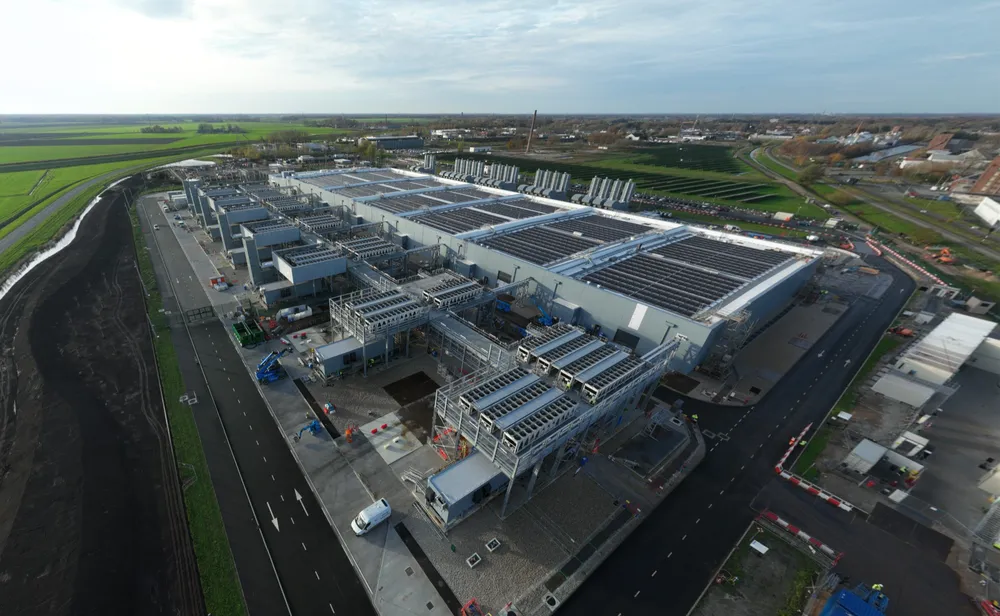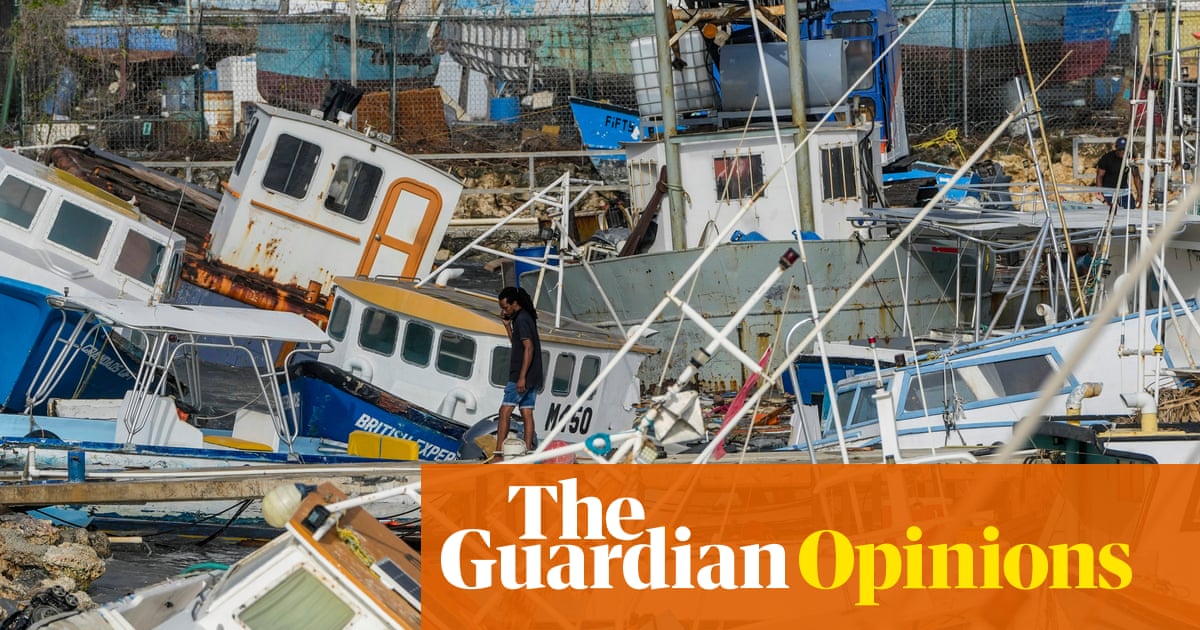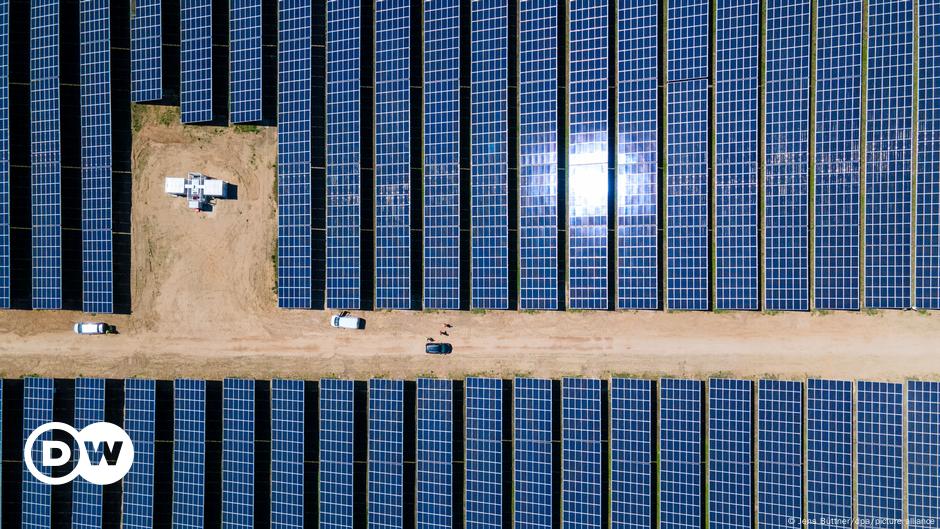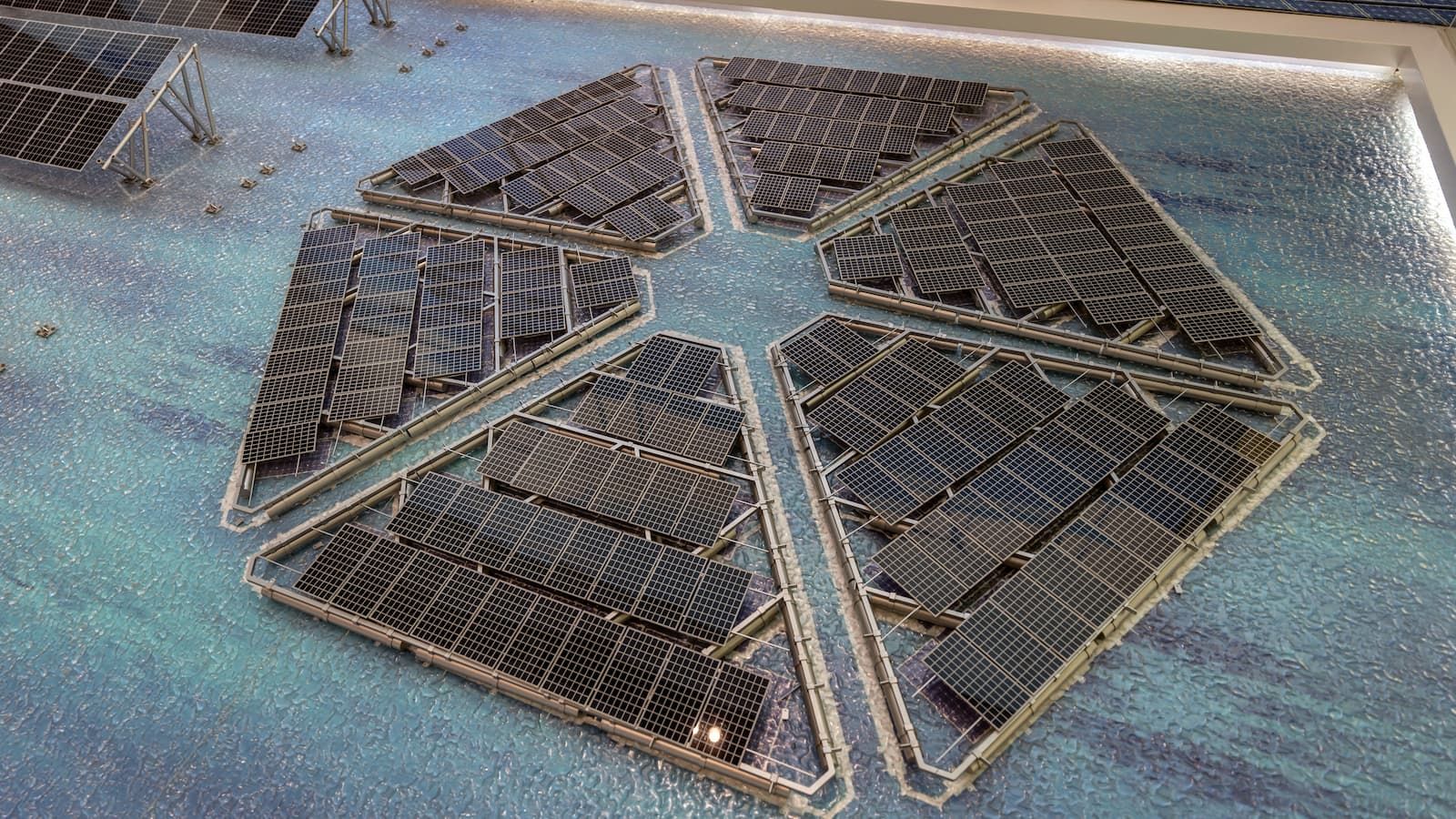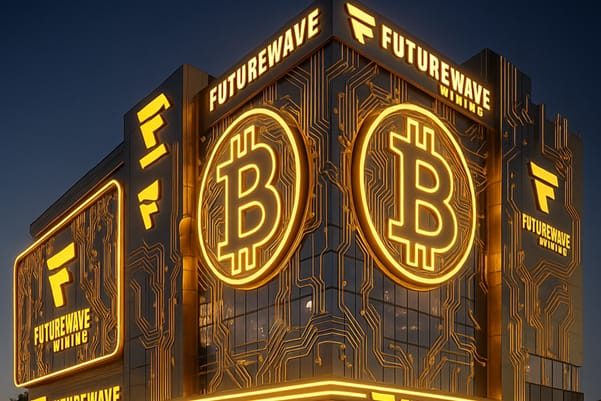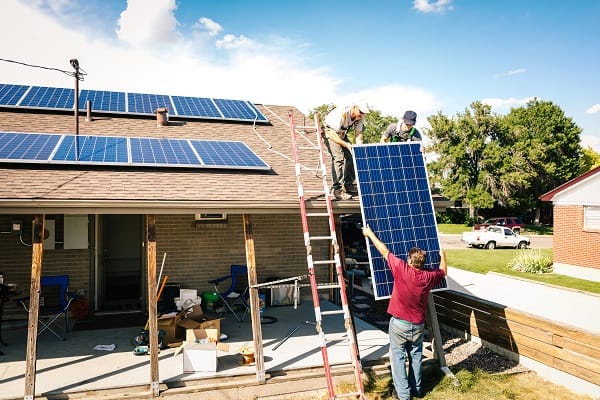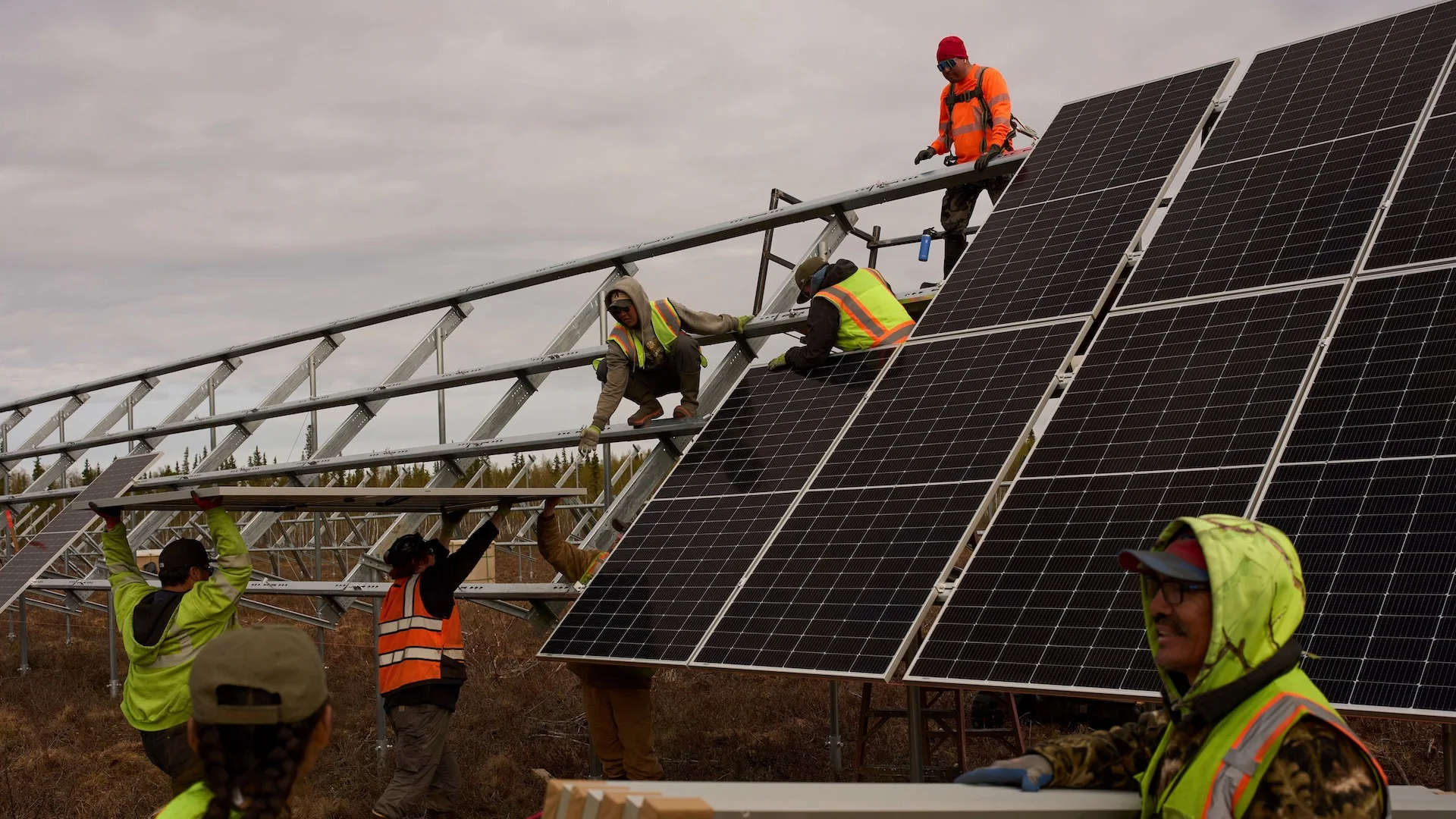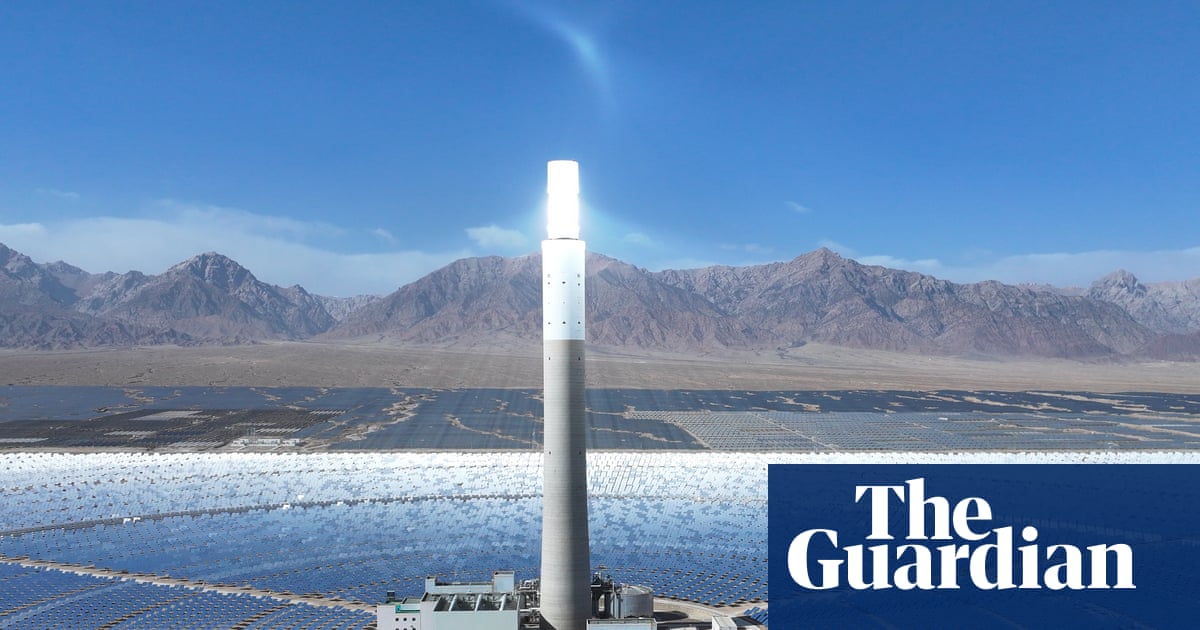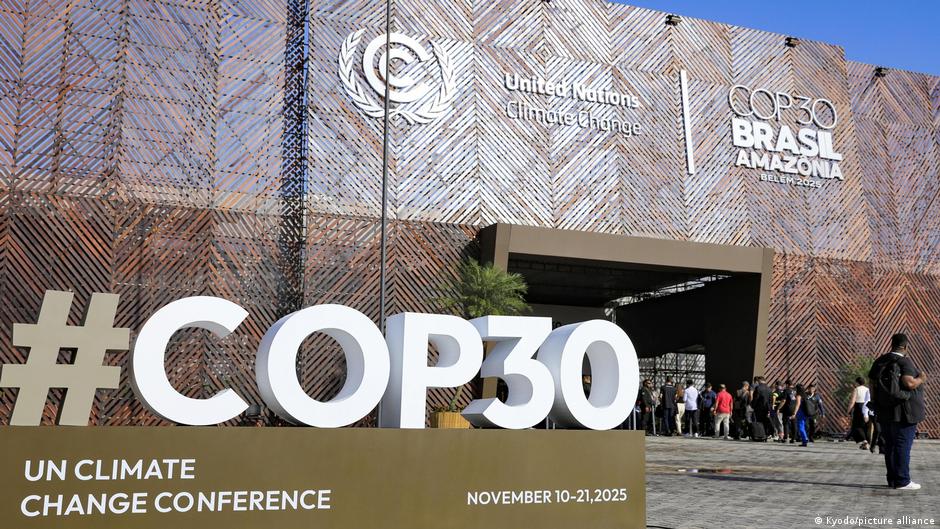#renewable-energy
#renewable-energy
[ follow ]
#climate-change #cop30 #solar-power #paris-agreement #emissions #electricity-demand #data-centers #global-warming
US politics
fromEarth911
1 day agoClassic Podcast: Historian Jay Hakes on the 1970s Energy Crises' Link to Climate Policy Today
1970s energy crises reshaped U.S. energy policy, prompting early renewable investments and influencing decades of oil-focused choices and later renewed shifts toward energy independence.
fromKqed
2 days agoCalifornia Lowers Climate Pollution by 3%, Report Finds | KQED
California's planet-warming pollution shrank by 3% in 2023, one of the largest year-over-year reductions the state has seen, according to a report by nonprofit Next 10. The state's use of cleaner fuels in heavy-duty transportation, like big rigs, and its deployment of battery storage and solar energy drove this climate progress, in large part. While the transportation sector comprised the state's largest category of emissions, accounting for roughly 38% of emissions in 2023, it also saw the largest percentage decrease in emissions of any other sector, falling by 4.6%.
Environment
Environment
fromFortune
1 week agoExelon CEO: The 'warning lights are on' for U.S. elecgrid resilience and utility prices amid AI demand surge | Fortune
Immediate investment in diverse power generation and efficiency upgrades is required to prevent grid failures and curb soaring utility bills amid rising AI-driven demand and electrification.
fromwww.theguardian.com
1 week agoUS judge strikes down Trump order blocking wind energy projects
A federal judge on Monday struck down Donald Trump's executive order blocking wind energy projects, saying the effort to halt virtually all leasing of windfarms on federal lands and waters was arbitrary and capricious and violated US law. Judge Patti Saris of the US district court for the district of Massachusetts vacated Trump's 20 January executive order blocking wind energy projects and declared it unlawful.
US politics
fromAxios
1 week agoTrump offshore wind halt illegal, judge rules
Trump officials have been especially aggressive in targeting offshore wind projects, including ones already approved or even under construction. Driving the news: Judge Patti Saris, of the U.S. District Court for the District of Massachusetts, ruled Monday that Trump's Jan. 20 order is "arbitrary and capricious" under administrative law. The ruling came in a case brought by New York and other states, and the nonprofit Alliance For Clean Energy New York.
US politics
fromTheregister
1 week agoMeta and Google tap NextEra to feed their hungry datacenters
NextEra Energy on Monday tightened its grip on hyperscaler power demand, adding 2.5 GW of new renewable projects for Meta while deepening its partnership with Google, which already covers about 3.5 GW of capacity. Taken together, Meta and Google now touch roughly 18 percent of the 33.4 GW of generating capacity in operation at NextEra Energy's subsidiary, NextEra Energy Resources, underscoring both the growing appetite for datacenter power and the consolidation of supply among hyperscale customers.
Marketing
fromwww.scientificamerican.com
1 week agoChina's CO2 Emissions Might Have Finally Peaked
China's carbon dioxide emissions have plateaued in 2025, indicating the country may have reached a peak after years of being the world's top emitter. The plateau reflects how China's record-setting build-out of wind and solar power and rapid expansion into electric vehicles has tempered fossil-fuel emissions, according to the nonprofit Center for Research on Energy and Clean Air. China accounts for around one third of all global greenhouse gas emissions, although historically the U.S. has emitted more carbon.
Environment
fromenglish.elpais.com
2 weeks agoTikTok's first data center in Latin America will be in Brazil and will run entirely on wind power
TikTok, one of the world's most popular social media platforms, announced Wednesday that it will build its first data center in Latin America in Brazil, near the city of Fortaleza. The project represents a $38 billion investment. The Chinese company's supercomputers, which have revolutionized the internet with their short videos that are followed by hundreds of millions of users, will be operational in 2027 and will be powered exclusively by 100% renewable energy, according to a TikTok statement.
World news
fromwww.aljazeera.com
2 weeks agoWestern Cuba faces blackout as government seeks to update energy grid
For hours, millions of residents remained in the dark as the government worked to restore power to an area that spans from the westernmost province of Pinar del Rio to Mayabeque, just east of Havana. Throughout the morning, officials sought to reassure the public that electricity would soon be restored. Following the power outage in western Cuba, the workers at [the Ministry of Energy and Mines] immediately began restoration efforts, which are already under way,
World news
fromBitcoin Magazine
2 weeks agoHow Trash In Colombia Is Now Mining Bitcoin Cheaper Than Anywhere In America
Colombian Bitcoin and crypto mining company Horeb Energy reveals 2.5 cents per kWh of green biogas energy in the North Santander region of the Latin American country. The company has achieved energy prices 50% lower than the North American average of 3.5 to 6 cents per kwh for Bitcoin mining operations, through a strategic alliance with multinational energy company Veolia. Authorized in 1853 by Napoleon III to help build out public water works infrastructure in France, Veolia is a global leader in environmental services focused on water, waste, and energy solutions. Today in Norte de Santander, Colombia, the company operates critical facilities dedicated to biogas valorization and solid waste management - a common problem in Colombia and Latin America in general, known for massive landfills. Veloia also operates the "Centro Inteligente de Gestión Ecológica" - CIGE Guayabal landfill, a pioneer in biogas systems development in the region.
Environment
US politics
fromArs Technica
2 weeks ago"Renewable" no more: Trump admin renames the National Renewable Energy Laboratory
The National Renewable Energy Laboratory renamed National Laboratory of the Rockies reflects a federal shift toward broader energy priorities and deemphasis of renewable-focused research.
UK news
fromLondon Business News | Londonlovesbusiness.com
3 weeks agoInvesting in the UK in 2026: Orb Strategies reviews possible venues - London Business News | Londonlovesbusiness.com
UK investment focus will likely shift toward undervalued equities, renewable energy projects, technology/fintech growth, and alternative assets amid ongoing political and trade uncertainties.
Artificial intelligence
fromHarvard Business Review
4 weeks agoHow Data Centers Can Support Energy Resiliency While Managing AI Demand - SPONSOR CONTENT FROM SCHNEIDER ELECTRIC
AI-driven data center growth is rapidly increasing electricity demand, straining grids and requiring major investments, renewable capacity, and new utility models.
Environment
fromwww.theguardian.com
4 weeks agoBhutan PM on leading the first carbon-negative nation: The wellbeing of our people is at the centre of our agenda'
Wealthy Western nations responsible for the climate crisis can improve citizen health and happiness by prioritising environmental conservation and sustainable economic growth.
fromFast Company
4 weeks agoWhy renewable energy isn't replacing fossil fuels faster
A decade ago, the cheapest way to meet growing demand for electricity was to build more coal or natural gas power plants. Not anymore. Solar and wind power aren't just better for the climate; they're also less expensive today than fossil fuels at utility scale, and they're less harmful to people's health. Yet renewable energy projects face headwinds, including in the world's fast-growing developing countries.
Environment
fromThe New Yorker
1 month agoWhy the Time Has Finally Come for Geothermal Energy
When I arrived in Reykjavík, Iceland, last March, a gravel barrier, almost thirty feet at its highest point, had been constructed to keep lava from the Reykjanes volcano from inundating a major geothermal power station not far from downtown. So far, it had worked, but daily volcano forecasts were being broadcast on a small television at the domestic airport where I was waiting to take a short flight to Akureyri.
Environment
fromwww.theguardian.com
1 month ago$170,000 a minute: why Saudi Arabia is the biggest blocker of climate action
Can you imagine someone giving you $170,000 (129,000)? What would you buy? Can you imagine getting another $170,000 one minute later? And the handouts then continuing every minute for years? If so, you have a feel for the colossal cash machine that is Saudi Arabia's state oil company Aramco, the world's biggest producer of oil and gas last year. That tidal wave of cash keeps the authoritarian kingdom afloat,
Environment
Real estate
fromComputerWeekly.com
1 month agoBlackpool Council preps datacentre planning application for tech-focused town regeneration bid | Computer Weekly
Blackpool will develop a 40-acre Silicon Sands technology campus anchored by a 6MW renewable-powered datacentre leveraging low-latency undersea fibre connections.
fromBusiness Insider
1 month agoWe moved from Seattle to the Boston area so my husband could attend Harvard. Living here hasn't been so easy.
Hayley and Helaman Perry-Sanchez put off their move to Cambridge, Massachusetts, as long as they could. Helaman was accepted to Harvard Business School in 2020, and though he was excited to pursue his MBA, the Perry-Sanchezes weren't as eager to relocate to the East Coast. After meeting and marrying while they were in college in Utah - and subsequently leaving the Mormon church together - Hayley, 27, and Helaman, 29, had found jobs and built a life in Seattle.
Real estate
fromFast Company
1 month agoRenewable energy and EVs have grown so much faster than experts predicted 10 years ago
Renewable energy has grown faster than every major forecast predicted in 2015. There's now four times as much solar power as the International Energy Agency (IEA) expected 10 years ago. Last year alone, the world installed 553 gigawatts of solar power-roughly as much as 100 million U.S. homes use-which is 1,500% more than the IEA had projected. Investors are now pouring twice as much into renewables as into fossil fuels.
Environment
fromFortune
1 month agoSaudi power chair: Tariffs weaken the global energy transition and hurt humanity | Fortune
"These barriers with imports, exports, all of these issues, they are making it more complicated for the world. They are making it very expensive for everybody. We are just creating barriers unnecessarily for no reason. The whole globe needs each other," Abunayyan said. "There's no one country that does not need the others. We are all human on this earth. We need to work together, we need to have integration, and we need to think about how we create something that's good for all our people on this earth."
Environment
fromIT Pro
1 month agoEquinix announces multi-billion pound data center investment in 'huge win' for UK
This £3.9 billion investment is a huge win for Britain. It will give businesses - from life sciences to high street banks - the ability to connect to thousands of other businesses across the world in an instant, powering our AI ambitions, boosting growth and creating hundreds of well-paid jobs,
UK news
fromIT Pro
1 month agoPlans announced for UK's first renewable-powered sovereign cloud
Together with SambaNova and our strategic partners, we're building a sovereign AI infrastructure powered by renewable energy, demonstrating that sustainability and scale can go hand in hand. Our goal isn't just to make AI greener, but to make it competitive, compliant and cost-effective.
Artificial intelligence
UK politics
fromwww.theguardian.com
1 month agoRenewable energy investment should come from defence budgets, say retired military leaders
Renewable and low-carbon energy investment should count as defence spending because climate-driven vulnerabilities and fossil-fuel dependence threaten national security and resilience to foreign aggression.
fromwww.archdaily.com
1 month agoZero Emission Data Center ISHIKARI (ZED ISHIKARI) / TAISEI DESIGN Planners Architects & Engineers
Aiming for architecture that harmoniously coexists with nature ZED Ishikari is located in a 100% renewable energy area in the industrial zone extending along Ishikari Bay in Hokkaido. This is a region where people have been exploring ways to adapt to the vagaries of nature, such as inclement climate and the flooding of the Ishikari River.
Design
Business
fromFortune
1 month agoThis Global 500 energy CEO says the model for the global corporation that worked for 20 years is obsolete-here's what he's building instead | Fortune
Schneider Electric must accelerate innovation and agility to lead the fast-accelerating energy transition driven by renewable supply growth and widespread electrification of demand.
fromBusiness Matters
1 month agoGovernment targets 400,000 new green energy jobs in major national skills drive
The Government has unveiled a national plan to create 400,000 green energy jobs within the next five years, in what ministers say will be one of the most significant workforce transitions in modern British history. Energy Secretary Ed Miliband said the programme aims to double the number of people working in the UK's low-carbon sector by 2030, with a sharp focus on equipping tradespeople, school leavers, ex-service personnel and workers leaving fossil fuel industries with the skills needed to support the transition to net zero.
Environment
Environment
fromDaily Coffee News by Roast Magazine
2 months agoBlue Bottle Coffee Claims Carbon Neutrality, Plans Regenerative Agriculture
Blue Bottle Coffee achieved carbon neutrality for 2024, reduced GHG emissions intensity 18.4% from 2018, and will invest in regenerative agriculture and climate resilience.
Miscellaneous
fromFortune
2 months agoEurope's China dilemma: Does the EU need to pick between faster decarbonization and green industry? | Fortune
Europe's renewable energy growth depends heavily on Chinese-made solar panels and wind turbines, challenging domestic supply chain development despite economic and employment considerations.
fromwww.dw.com
2 months agoRecord renewable energy growth falls short of climate goals DW 10/15/2025
The newly installed capacity from renewable energies amounted to around 582 gigawatts in 2024, or around 15.1% more than the previous year. While this was the highest amount ever recorded, in its report IRENA stressed that this was not enough for countries to reach global renewable energy goals, which target a yearly increase of 16.6%.
Environment
[ Load more ]

